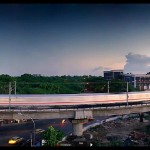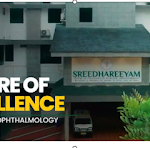NASA is hosting a competition along with Spaceward Foundation, called the “Beam Power” Challenge to build an “elevator to space”!! Here is more on it:
Picture a ribbon stronger than steel that stretches from Earth into orbit and acts as a kind of space highway, on which robots transport materials back and forth.
That is what scientists call the space elevator. And long before it’s ever a reality–if it is at all–scientists must discover the materials, mechanisms and wireless power source to make it work efficiently.
Considering it’s no small feat of optics, electricity and mechanics, NASA and the nonprofit Spaceward Foundation are hosting the first-ever competitions this weekend offering $50,000 to teams with the best design of robot climber and ribbon. The competition, to be held here at NASA’s Ames Research Center, is merely a conceptual demonstration of the space elevator.
“It’s far out for us, but we’re very interested in the technologies involved,” said Brant Sponberg, NASA project manager for the “centennial challenges,” a series of government-sponsored competitions that support space exploration. Sponberg was overseeing setup and tests of the competition on Friday.
The “Beam Power” Challenge, which will kick off Saturday at 5 a.m. PST, will test the design and efficiency of robot climbers, machines that can ascend and descend a 50-meter tether ribbon while carrying a payload.
Seven teams from the United States and Canada will get three chances to climb the ribbon, having to travel at a minimum speed of 1 meter per second. For each climb, teams get a score that’s a product of their payload mass and average velocity. The team with the highest score will win $50,000.
Many of the climbers are powered by solar cell panels. The Spaceward Foundation will cast a 10 kilowatt light onto the solar panels, if used, to give the bots power up the tether. As the ascent begins, the light will carry as much intensity as three to four suns, but toward the top, its intensity will equal only about one sun.
Steve Jones, an engineering and physics graduate student at the University of British Columbia, said his climber needs the equivalent of about two suns to make up the 50 meter tether.
He has been working on the team’s climber for the last six months, along with 14 other students. Jones said he was excited about the competition because it isn’t necessarily obvious how to solve the problem. It’s a mixture of optical, electrical and mechanical questions that involve creating a climber, he said, and many teams are coming at the problem differently.
For example, some teams are using solar cell panels, like his, and others, like Starclimber, are relying on a Stirling engine, which can convert heat into mechanical energy with an efficiency of 30 percent to 40 percent, on par with a gas engine and superior to photovoltaic cells.
“This is a great platform for sharing because it’s very open. We’re seeing each other’s designs and it’s accelerating the rate at which we learn,” said Jones.
The “Tether Challenge” is designed to help foster the development of strong, but lightweight materials that could support the space elevator. The contest requires teams to develop a tether that can improve on a commercially available one by 50 percent in breaking force. Teams will compete in a “pull-off,” where each pulls against the other until one breaks, to find the lightest and strongest. Finally, the best performing tether will compete against the “house” tether, or off the shelf material, and if successful, will win the $50,000.














